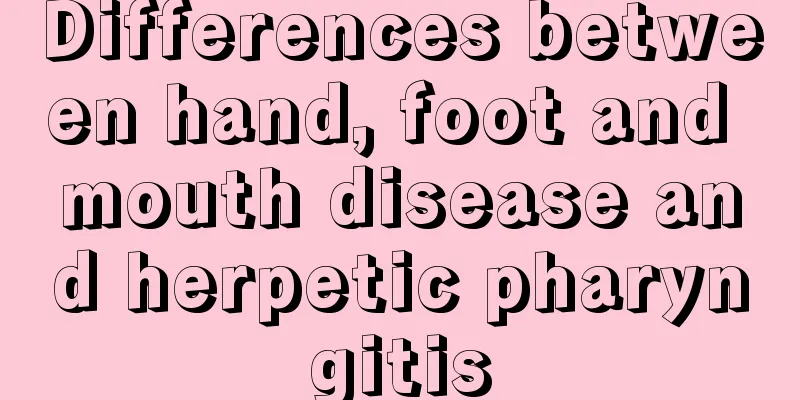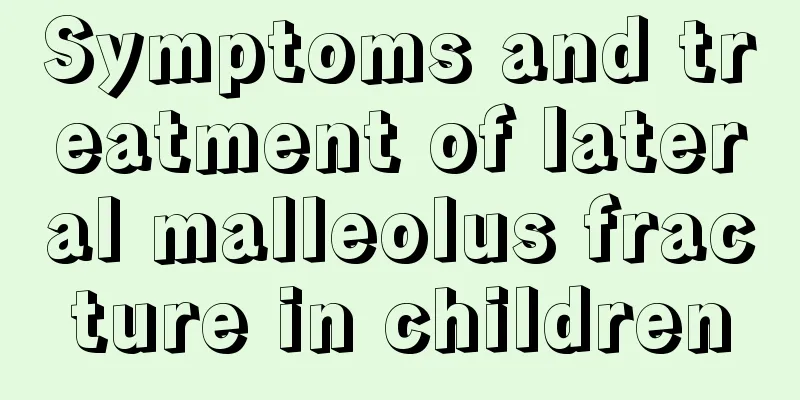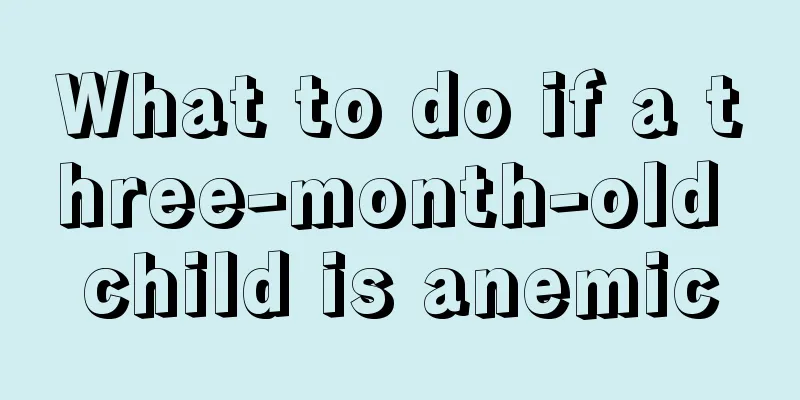Differences between hand, foot and mouth disease and herpetic pharyngitis

|
Hand, foot and mouth disease and herpangina are both very common. The two diseases are very similar and are easily confused. Both herpangina and hand, foot and mouth disease are highly prevalent in the summer. Herpangina mainly occurs in the mouth, while hand, foot and mouth disease is mostly caused by herpes in the baby's throat, which then develops to the back of the hands and feet. If you suffer from hand, foot and mouth disease or herpetic pharyngitis, you must go to the hospital for treatment in time. The difference between hand, foot and mouth disease and herpangina The biggest difference between herpangina and hand, foot and mouth disease is that the herpes in herpangina only appears in the mouth, while most children with hand, foot and mouth disease first have herpes in the throat, which then develops to the soles of the hands and feet, and rarely to the backs of the hands and feet, and is accompanied by fever. The rash is usually the size of millet grains or mung beans, surrounded by reddish grayish-white blisters or red papules. It is painless, itchy, and does not form scabs. Another important difference is that although pharyngitis may be complicated by bacterial infection, it will not cause complications such as encephalitis. In other words, it is almost impossible to develop severe illness or life-threatening conditions. A small number of children with hand, foot and mouth disease may develop complications such as myocarditis, pulmonary edema, and aseptic meningoencephalitis. If the disease progresses rapidly in some severely ill children, it may lead to death. Because the weather is relatively hot in summer and the indoor air circulation is poor, the bacteria and viruses in the indoor air multiply rapidly, enter the respiratory tract of children and cause diseases. Parents should pay attention to maintaining their children's personal and indoor hygiene, and try not to take their children to noisy public places. Hand, foot and mouth disease is a common infectious disease caused by a variety of human enteroviruses, mainly affecting infants and young children. Most children have mild symptoms, with fever and rash or herpes on the hands, feet, mouth and other parts of the body as the main features. A small number of children may develop damage to the central nervous system and respiratory system, leading to aseptic meningitis, encephalitis, acute flaccid paralysis, neurogenic pulmonary edema and myocarditis. Some seriously ill children may progress rapidly and are prone to death. Most children and adults infected will not develop symptoms, but can spread the virus. The enteroviruses that cause hand, foot and mouth disease include enterovirus 71, group A coxsackievirus, and certain serotypes of echovirus. What are the symptoms of hand, foot and mouth disease? 1. General symptoms (1) Acute onset, with an incubation period of 3-5 days, and prodromal symptoms such as low-grade fever, general malaise, and abdominal pain. Scattered painful, millet- to mung-bean-sized blisters appear on the oral mucosa, and maculopapules and herpes appear on the hands and feet. Initially, they are maculopapules, which later turn into herpes. They are round or oval, about 3-7 mm in size, like the size of a grain of rice, smaller than the chickenpox rash, harder in texture, with a red halo around it, and less fluid in the blisters. Dot-like or flaky erosions can be seen under the grayish-white membrane. After the rash subsides, no scars or pigmentation are left. If there is a secondary infection, the skin damage will often be aggravated. (2) In addition to the hands, feet and mouth, herpes can also be seen on the buttocks and near the anus, and occasionally on the trunk and limbs. They dry up and disappear after a few days. The rash is not itchy and painful. (3) Some children may develop generalized papules and blisters, accompanied by aseptic meningitis, encephalitis, myocarditis, etc. It may be accompanied by symptoms such as cough, runny nose, loss of appetite, nausea, vomiting, and headache. (4) Some cases only present with rash or herpetic pharyngitis. The whole course of the disease is about 5-10 days. Most cases can heal themselves with a good prognosis and no sequelae. 2. Symptoms of severe cases In a few cases (especially those under 3 years old), encephalitis, encephalomyelitis, meningitis, pulmonary edema, circulatory failure, etc. may occur. (1) Respiratory system manifestations include: shallow and difficult breathing, changes in respiratory rhythm, cyanosis of the lips, white, pink or bloody foamy fluid (sputum) in the mouth, and sputum sounds or moist rales in the lungs. (2) Neurological manifestations include poor spirits, drowsiness, headache, vomiting, easy fright, limb tremors, weakness or paralysis; physical examination may reveal meningeal irritation and weakened or absent tendon reflexes; critical cases may manifest as frequent convulsions, coma, cerebral edema, and brain herniation. (3) Circulatory system symptoms include: pale complexion, increased or decreased heart rate, shallow, rapid, weakened or even absent pulse, cold limbs, cyanosis of fingers and toes, and increased or decreased blood pressure. |
<<: How to treat pharyngitis in children
>>: What is the most accurate way to test for tuberculosis in children?
Recommend
What causes bedwetting at 15?
Bedwetting is actually a manifestation of a slow ...
What to do if your child doesn't sleep at night
Parents must be very worried when their children ...
Children have abdominal pain but no diarrhea
Many times, children will cry incessantly because...
What are the symptoms and treatments of ADHD in children?
Attention Deficit Hyperactivity Disorder (ADHD) i...
What should I do if my child's feet are a little bent?
As children grow up, any physical changes will be...
What medicine should children take for diarrhea?
When babies are young, their spleen and stomach a...
What is your experience in treating baby’s café au lait spots?
For parents, the most worrying and frightening th...
Newborn baby not feeding overnight
Newborns feel hungry very easily, so they need to...
Why does my baby suddenly cry at night?
Babies are the flowers of the motherland. People ...
What is the cause of testicular pain in a 10-year-old child?
The testicles are an important part of the male r...
What is the disease of eating foot skin
The heel is the main support point for human acti...
How to reduce inflammation when baby's neck is soaked and water is flowing
For many new mothers, they may not have encounter...
How to solve the problem of baby’s itchy skin and constant scratching?
The baby's skin is very delicate and sensitiv...
8 ways to praise your children to make them smarter
1. More specific praise Think carefully about wha...
What to do if your child is bitten by an insect
Children's skin is relatively delicate, and t...









